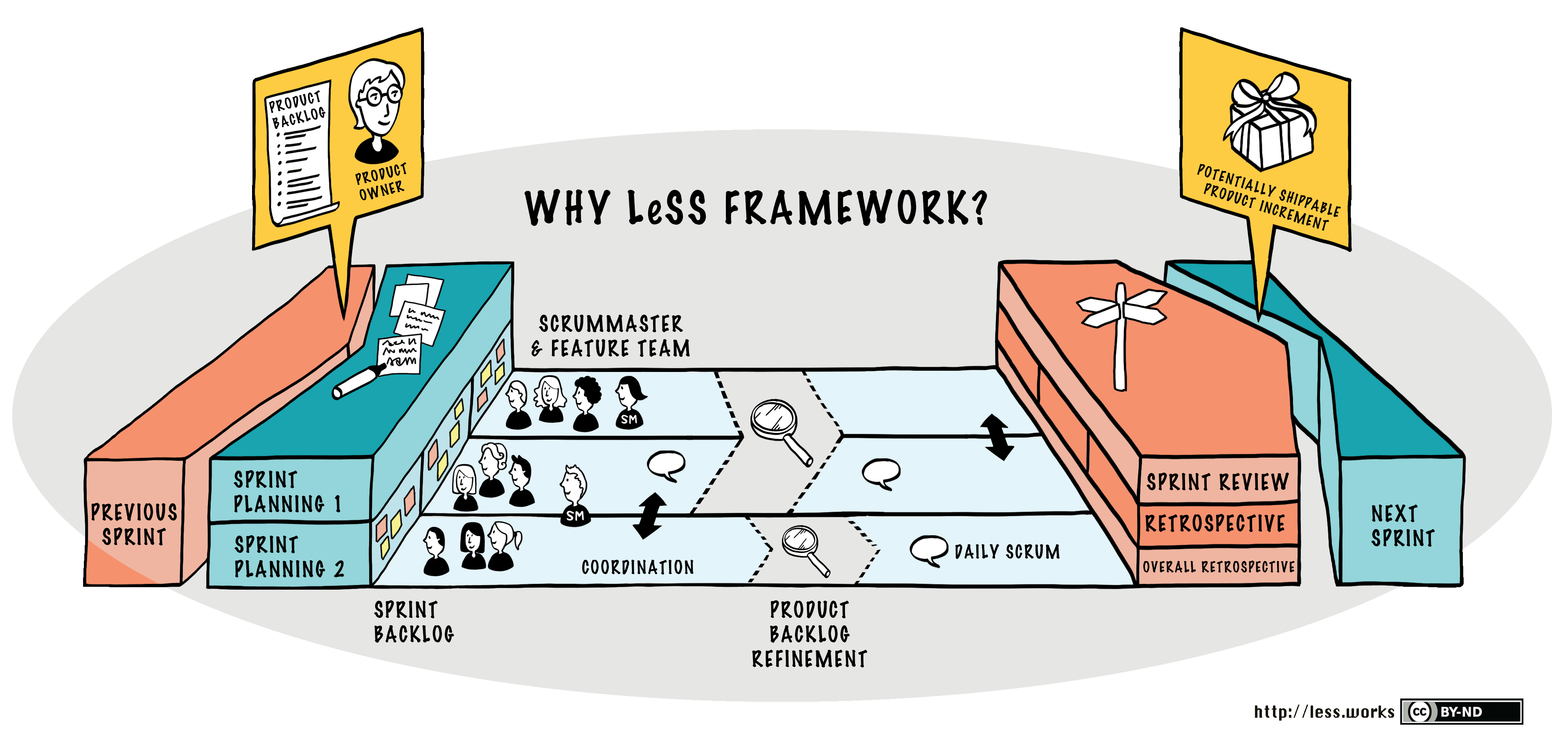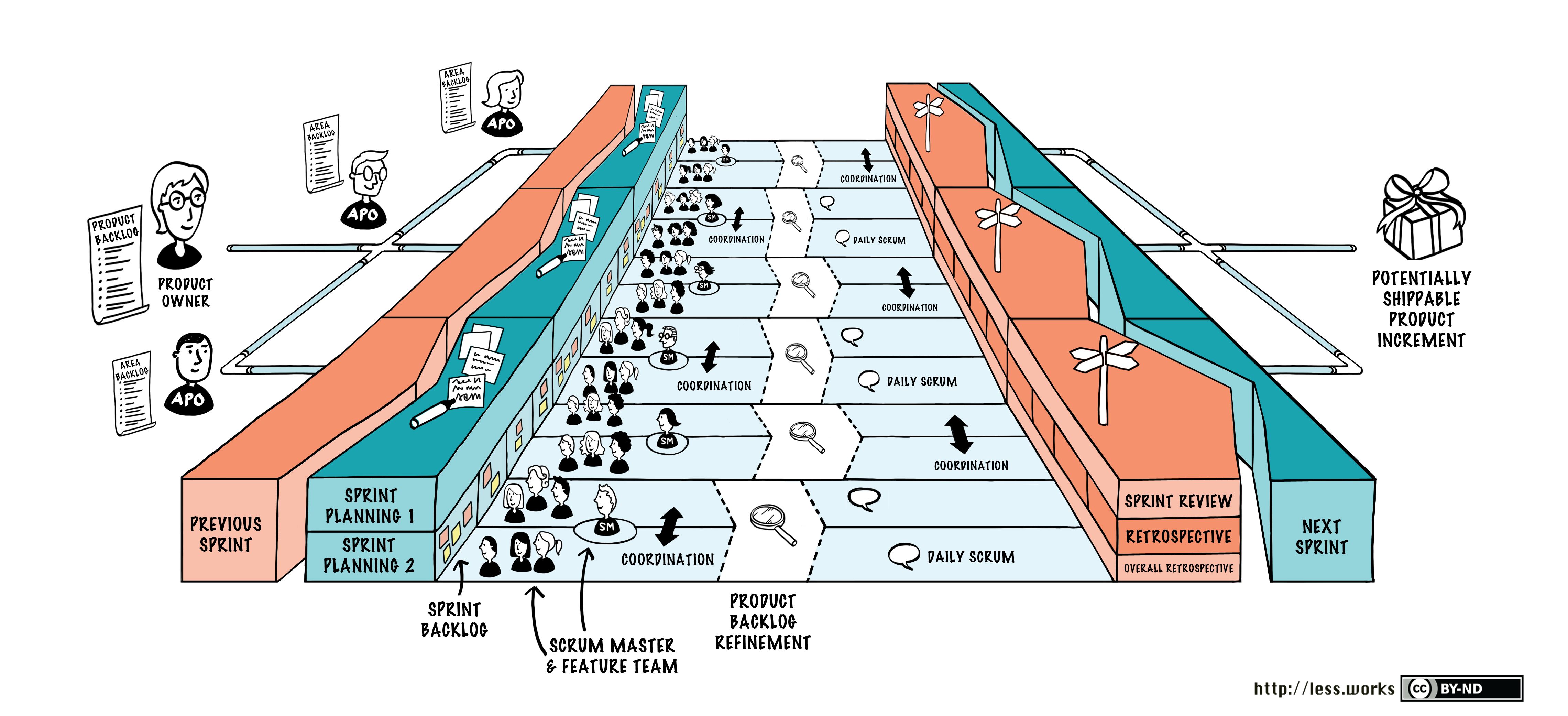LeSS Agile?
Purpose of Software Development
- To solve a customer’s problem, not writing code
- Need constant feedback (eg. testing, customer’s feedback) Waterfall methodology never work.
Small organization becomes larger
Many companies starts from an idea, a bunch of people working together. They tried it in the market, many failed. Some manages to survive and get successful. The successful small company starts hiring people, later found out nothing delivered after some times. What happened next? The company hires managers - project managers. If delivered but have a lot of issues in customers, then the company will hire more QA. But customers said it is not the product they want. The company will start hire business analyst or someone who understand more about markets.
The root cause is to find out why the engineers cannot stick to the timeline instead of making organization larger.
Optimizing locally is much better than optimizing overall.
This is the difference between a FinTech startup and a bank - organization complexity.
Will switching to “Agile” solve this problem?
No. If you want different results, you will need a different system. The main point is to make things more simpler, not more complex system.
Traditional large groups are complicated - though not because they need to be, but they make illusion that it is necessary.
Optimizing goal of an organization
- To deliver the highest business value
- Ability to adapt - what important today might not be important tomorrow. It doesn’t mean it is delivered. It means sooner than later.
- learning organization - really optimized for learning. The team output is equal to the knowledge. The more the team learns, the more the team can deliver the goals.
LeSS overview
Fixing Taylorism.
There is no question that the cost of production is lowered by separating the work of planning and the brain work as much as possible from manual labour
LeSS / LeSS Huge
2-8 teams : LeSS framework x> 8 teams : LeSS Huge

- Single product owner/ single product backlog
- Each team has own backlog and one scrum master in the team.
- Sprint planning 1 (half an hour) - which team is going to work on what feature
- Sprint planning 2 (couple of hours) - sprint backlog is created
- Mid of sprint will have product backlog refinement (for upcoming sprint)
- Each day will have daily scrum
- Sprint review for all team at once
- Each team will have own retrospective
- Finally, one overall retrospective
Role
- Product Owner (1 person)
- Team
- Scrum Master
- Manager (improve capability of development system, decide structure and policies)
LeSS Huge vs LeSS
There are a number of Area Product Owners to support the product owner.

Q: Should one engineer involve in multiple projects? A: No. You shouldn’t.
Q: Who should involve in Overall Retrospective? A: Only managers will attend. Although there is downfalls that the whole team is not involved.
Q: Who will involve in the product backlog refinement? A: Only people are needed.
Q: How long is it for each sprint? A: Typically, 2 weeks including all the sprint ceremonies - it is important to time-box it.
